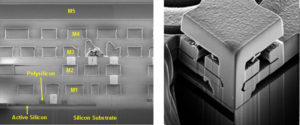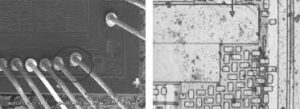Crack Chip ATMEGA324PV Code
Crack Chip ATMEGA324PV memory include flash and eeprom, the content inside the memory will be presented in the format of binary or heximal, then the MCU code extracted will be copied to other blank Microcontroller ATmega324PV;

Crack Chip ATMEGA324PV memory include flash and eeprom, the content inside the memory will be presented in the format of binary or heximal, then the MCU code extracted will be copied to other blank Microcontroller ATmega324PV
These options should only be used when not operating close to the maximum frequency of the device, and only if frequency stability at start-up is not important for the application. These options are not suitable for crystals.
These options are intended for use with ceramic resonators and will ensure frequency stability at start-up. They can also be used with crystals when not operating close to the maximum frequency of the device, and if frequency stability at start-up is not important for the application if crack chip pic18f8439 flash.
The device can utilize a 32.768 kHz watch crystal as clock source by a dedicated Low Frequency Crystal Oscillator. The crystal should be connected as shown in Figure 22. When this Oscillator is selected, start-up times are determined by the SUT Fuses and CKSEL0.
The calibrated internal RC Oscillator by default provides a 8.0 MHz clock. The frequency is nominal value at 3V and 25°C. The device is shipped with the CKDIV8 Fuse programmed. See “System Clock Prescaler” on page 48 for more details. This clock may be selected as the system clock by programming the CKSEL Fuses as shown in Table.
If selected, it will operate with no external components. During reset, hardware loads the calibration byte into the OSCCAL Register and thereby automatically calibrates the RC Oscillator. At 3V and 25°C, this calibration gives a frequency of 8 MHz ± 1%.
The oscillator can be calibrated to any frequency in the range 7.3 – 8.1 MHz within ±1% accuracy, by changing the OSCCAL register. When this Oscillator is used as the chip clock, the Watchdog Oscillator will still be used for the Watchdog Timer and for the Reset Time-out. For more information on the pre-programmed calibration value when unlock chip pic18f8490 firmware.
- The device is shipped with this option selected.
- The frequency ranges are preliminary values. Actual values are TBD.
- If 8 MHz frequency exceeds the specification of the device (depends on VCC), the CKDIV8 Fuse can be programmed in order to divide the internal frequency by 8. When this Oscillator is selected, start-up times are determined by the SUT Fuses.
- The Oscillator Calibration Register is used to trim the Calibrated Internal RC Oscillator to remove process variations from the oscillator frequency. The factory-calibrated value is automatically written to this register during chip reset, giving an oscillator frequency of 8.0 MHz at 25°C.
- The application software can write this register to change the oscillator frequency. The oscillator can be calibrated to any frequency in the range 7.3 – 8.1 MHz within ±1% accuracy. Calibration outside that range is not guaranteed.
Tags: crack chip protected archive,crack chip protected bin,crack chip protected code,crack chip protected content,crack chip protected data,crack chip protected eeprom,crack chip protected file,crack chip protected firmware,crack chip protected hex,crack chip protected information,crack chip protected memory,crack chip protected program


